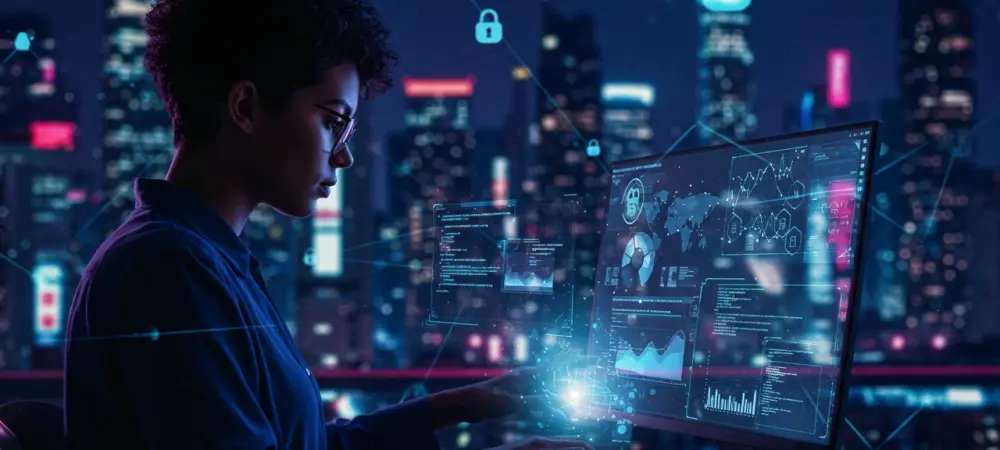As the digital landscape continues to expand and evolve, corporations are increasingly facing an unprecedented threat from cyberattacks, pushing the need for enhanced cybersecurity measures to the forefront of business priorities. Recent high-profile incidents, such as the breach involving Ahold Delhaize USA, have exposed the vulnerabilities of major enterprises, underscoring the importance of safeguarding sensitive data and protecting organizational integrity. This particular attack compromised the personal information of more than two million individuals, including Social Security numbers and bank account details, while disrupting several operational systems. Against this backdrop, firms are urgently evaluating their cybersecurity protocols to combat emerging threats posed by sophisticated attackers who are continually refining their techniques. With hackers targeting complex networks and databases, businesses are now tasked with the challenge of strengthening defenses and preparing effective response strategies to not only avert breaches but also respond effectively when they occur.
Understanding the Sophistication of Modern Cyber Threats
Modern cyber threats are characterized by a level of sophistication that demands businesses evolve rapidly to protect their data from increasingly ingenious and persistent attackers. Adversaries like Inc. Ransom, responsible for recent attacks, execute well-coordinated operations tailored to exploit specific vulnerabilities within targeted networks. These attackers often employ advanced techniques such as social engineering, zero-day exploits, and ransomware to infiltrate systems and exfiltrate sensitive data. As they navigate through corporate networks, hackers adapt their strategies, leveraging the latest technologies to bypass traditional security measures. This ongoing evolution in cyber tactics necessitates a proactive approach to cybersecurity, where businesses must anticipate potential breaches and prioritize identifying and patching vulnerabilities before they can be exploited. For corporations, this means reinforcing security protocols to withstand the complexities of modern threats, deploying comprehensive detection systems, and fostering a culture of security awareness across all organizational levels. Embracing a robust cybersecurity framework, grounded in continuous monitoring and vulnerability assessment, is essential in mitigating risks associated with evolving cyber threats.
Developing Robust Cybersecurity Frameworks
To address the growing concerns associated with cyberattacks, corporations must focus on developing and implementing robust cybersecurity frameworks that encompass various facets of data protection and system security. A holistic approach involves integrating a mix of advanced technologies such as machine learning and artificial intelligence to enhance threat detection capabilities and automate responses to potential breaches. Multi-layered security measures that include firewalls, intrusion detection systems, and encryption technologies should be standard across organizational networks to fortify defenses against unauthorized access. Beyond technological enhancements, developing strong incident response plans is crucial in managing breaches effectively, allowing businesses to react swiftly to minimize impacts and restore normal operations. Such plans should incorporate comprehensive procedures for crisis management, including communication strategies and remediatory actions tailored to the scope of a given attack. Furthermore, fostering collaboration between cybersecurity teams and other departments within the enterprise ensures a cohesive approach to safeguarding sensitive data, leveraging the combined expertise to address vulnerabilities and bolster overall security posture.
Importance of Employee Training and Awareness
In addition to technological advancements, firms must recognize the critical role of employee training and awareness in thwarting cyber threats. Employees often serve as the first line of defense against potential breaches, necessitating a robust training program focused on instilling a proactive cybersecurity mindset. Regular educational initiatives should be conducted to keep staff informed about current cyber risks and proper protocols amidst evolving threat landscapes. Training sessions that highlight the dangers of phishing attempts, encourage the use of strong, unique passwords, and promote safe browsing practices contribute to fostering a security-conscious workplace. In parallel, companies must implement clear policies concerning data handling and access, ensuring personnel understand their responsibilities in preserving data integrity and confidentiality. By establishing a culture where cybersecurity is integral to day-to-day activities, businesses empower employees to recognize and report potential threats promptly, mitigating risks posed by human error. Reinforcing such awareness through periodic refreshers and assessments ensures vigilance remains high, effectively reducing vulnerabilities and fortifying organizational defenses.
Enhancing Cooperation and Information Sharing
Cooperation and information sharing within the cybersecurity community are integral elements in combating the global threat of cyberattacks. Collaborations between businesses, industry groups, and government entities enable the exchange of vital intelligence regarding emerging threats and successful defense strategies, fostering a united front against malicious actors. Engaging in partnerships with cybersecurity firms or participating in threat intelligence platforms can provide businesses with access to expertise and resources, facilitating shared learning and the development of advanced protective solutions. This communal approach to cybersecurity can contribute to uncovering previously undetected vulnerabilities and offer insights into potential threat vectors that might afflict similar organizations. Moreover, compliance with industry best practices and standards, such as those outlined by the National Institute of Standards and Technology (NIST) or the International Organization for Standardization (ISO), helps organizations align their security measures with broader security frameworks endorsed by leading authorities. Through collaborative efforts, companies can enhance their security protocols, stay abreast of developing trends, and better equip themselves to counteract sophisticated cyber threats.
Reflections and Next Steps
As the digital realm rapidly grows and evolves, businesses are facing an unprecedented threat from cyberattacks, pushing the demand for heightened cybersecurity to the top of corporate agendas. High-profile breaches, like the one at Ahold Delhaize USA, have revealed major enterprises’ vulnerabilities, emphasizing the need to protect sensitive data and maintain organizational integrity. This specific incident compromised the personal details of over two million individuals, including Social Security numbers and bank account information, while also causing disruptions to several operational systems. In this context, companies are urgently reassessing their cybersecurity protocols to counteract the threats posed by skilled attackers who are constantly enhancing their techniques. With hackers aiming at intricate networks and databases, firms now grapple with the challenge of bolstering defenses and devising effective response strategies to not only prevent breaches but also efficiently address them when they occur. Adapting to these cyber threats has become an essential aspect of modern business operations.

